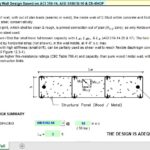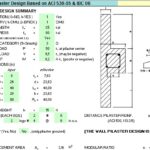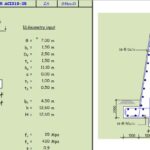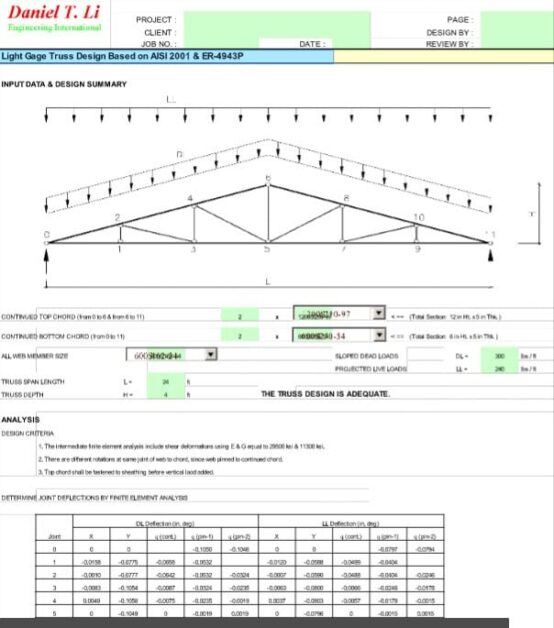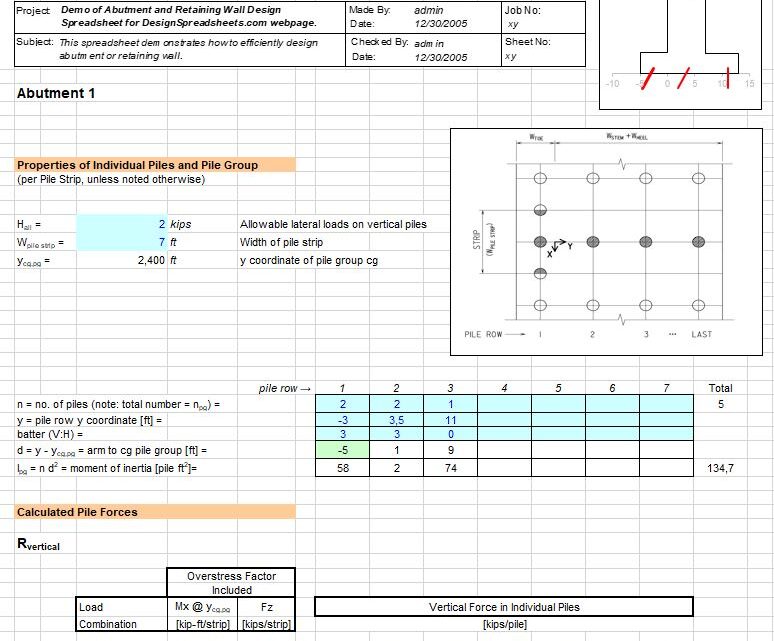
Abutment And Retaining Wall Analysis Spreadsheet
3 January 2025Abutment And Retaining Wall Analysis Spreadsheet
Abutments and retaining walls are essential components in construction and civil engineering, offering support and stability to structures in challenging environments. While they may appear similar at first glance, their functions, designs, and applications differ significantly. This article explores these critical structures, highlighting their differences, uses, and why they are indispensable in modern construction projects.
What is an Abutment?
An abutment is a structural element that supports the ends of a bridge or arch, transmitting loads from the structure to the ground. Its primary role is to ensure the stability of bridges by anchoring them securely to the ground. Abutments are typically found at the edges of bridges and are designed to:
- Transfer Loads: Distribute the weight of the bridge and vehicular traffic to the ground.
- Resist Lateral Forces: Withstand forces caused by water, wind, or seismic activity.
- Provide Stability: Prevent movement or displacement of the bridge structure.
Abutments are commonly constructed using materials like reinforced concrete, masonry, or steel. They are designed to endure immense pressure, making them a crucial component in bridge engineering.
What is a Retaining Wall?
A retaining wall is a structure built to retain or hold back soil, rock, or other materials. Its purpose is to prevent erosion, manage slopes, and create usable spaces in uneven terrain. Retaining walls are commonly used in:
- Landscaping Projects: Creating terraces or level areas on sloped land.
- Road Construction: Supporting roadways built on inclines or near unstable soil.
- Flood Control: Preventing soil erosion in areas prone to flooding.
These walls can be constructed using various materials, including concrete blocks, bricks, natural stone, or timber. Modern retaining walls often incorporate drainage systems to prevent water accumulation and maintain structural integrity.
Key Differences Between Abutments and Retaining Walls
While both abutments and retaining walls provide support, their roles and designs differ significantly:
- Function:
- Abutments: Specifically support bridges and distribute loads.
- Retaining Walls: Hold back soil or other materials to prevent erosion or collapse.
- Location:
- Abutments: Found at the ends of bridges or arches.
- Retaining Walls: Found on slopes, embankments, or areas with uneven terrain.
- Design:
- Abutments: Engineered to handle vertical and lateral forces from bridge structures.
- Retaining Walls: Focus on resisting lateral pressure from soil or water.
- Construction Materials:
- Abutments: Typically use reinforced concrete or steel.
- Retaining Walls: Utilize a wider variety of materials, depending on the project’s aesthetic and functional needs.
Applications of Abutments and Retaining Walls
Both abutments and retaining walls play vital roles in different construction scenarios:
- Abutments:
- Bridge construction
- Elevated highways and railways
- Tunnels and culverts
- Retaining Walls:
- Landscaping and gardening projects
- Parking lot support
- Waterfront and flood control structures
Choosing the Right Structure for Your Project
Selecting between an abutment and a retaining wall depends on your project’s specific requirements. For bridge projects, abutments are indispensable for load transfer and stability. For landscaping or slope management, retaining walls provide a practical and aesthetic solution.
Consulting with a structural engineer ensures the appropriate design, material selection, and construction approach, guaranteeing the long-term durability of the structure.
Why Proper Installation Matters
Improper installation of abutments or retaining walls can lead to structural failures, increased maintenance costs, and safety hazards. To avoid these issues, prioritize:
- Thorough Site Analysis: Understand soil composition, load requirements, and environmental factors.
- Quality Materials: Use durable and appropriate materials for the specific structure.
- Expert Engineering: Work with experienced professionals to design and install the structure.
Conclusion
Abutments and retaining walls are indispensable in modern construction, each serving unique purposes to ensure the stability and functionality of various projects. Understanding their differences and applications can help you make informed decisions for your construction needs.
Whether you’re designing a bridge, managing a steep slope, or preventing erosion, these structures offer the support and durability needed to withstand the test of time. By investing in proper design and installation, you can ensure a safe and long-lasting solution for your project.


